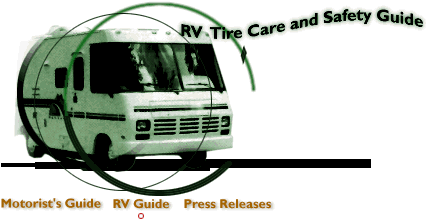|
|

Your RV must be weighed fully loaded, that is, with passengers, food, clothing, fuel, water, propane, supplies, etc. Any towed vehicle (car/pickup, boat or trailer) or item loaded on brackets on the back of the RV, such as bikes or motorcycles, should also be included in the weighing.
There are three types of scales:
- PLATFORM - This scale is long enough to weigh the complete vehicle. The following steps are suggested:
a. Pull onto the scale so that only the front axle is on the platform (with the end of the scale midway between the front and rear axles), and record the scaled weight.
b. Pull forward until the full unit is on the scale weight.
c. Pull forward so that only the rear axle is on the scale (again with the edge of the scale midway between the front and drive axles), and record the scaled weight.
d. If the RV has a rear tag axle, pull forward so that only the tag axle remains on the scale, and record the scaled weight.
If there is no towed vehicle, this weight will represent the actual weight on the tag axle. To determine the actual load on the drive axle, subtract this value from the recorded weight in step 1c. If there is a towed vehicle, proceed to step 1e to obtain the "towed vehicle only" weight. Subtract that value from the value above and then subtract that from the weight recorded in step 1c.
e. If a boat, trailer or other vehicle is being towed, it should be weighed and combined with the towing vehicle's GVW to ensure the total weight does not exceed the GCWR.
- SEGMENTED PLATFORM - Platform scales with segmented sections can provide individual axle weights and total vehicle weights simultaneously, when the vehicle is positioned properly.

Position the vehicle on the scales so that each axle centered as much as possible on separate segments, and record the weight. Reposition the vehicle so that only one side is on the scale, again centered on the segment as much as possible. Subtract the weighed wheel positions from the total axle weights to determine the unweighed wheel positions' weights.
- SINGLE AXLE - This scale weighs one axle at a time. Drive your front axle onto the scale and stop long enough for the weight to be recorded. Pull vehicle forward until the rear axle is on the scale. To obtain the gross vehicle weight, add the two axle loads together. To obtain the individual wheel position weights, repeat this process with only one side of the RV on the scale.
Note: Even though the weight of the total axle may be within the axle's rating, it may be overloaded on one side. This causes one wheel position to be overloaded. Therefore, side-to-side weighing should also be done.
To determine individual wheel position weights, it is necessary to repeat the previous three steps (1a, 1b, and 1c), but this time, use only one side of the scale.
To calculate the opposite side of the vehicle wheel position weight, subtract this side's weights from the weights recorded in steps 1a, 1b, and 1c.
Your RV must remain as level as possible on the scale (even though an axle or side is not physically on the scale). Obviously, to obtain the side-to-side weights, there must be enough space on either side of the scale to accommodate the RV being partially off the scale.
If there is a difference in the weights on one side of the vehicle as compared to weights on the other side, components (tires, wheels, brakes, springs, etc.) on the heavier side could be overloaded, even though the total axle load is within the GAWR. It is important to redistribute the load to avoid component failure, as well as to improve the handling characteristics of the vehicle.
With these actual weights, it is now possible to compare them against the GAWR, GVWR and tire capacities. These weights are also what should be used to help determine the proper air pressure for the tires.
|

